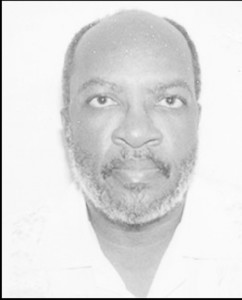By R.M. Austin
Former Guyana Ambassador
to the People’s Republic of China
I had hardly joined the Foreign Ministry in 1973 when I was made Special Assistant to Lloyd Searwar. He was at the time responsible for matters concerning the Non-Aligned Movement and was therefore actively involved in preparing for the 4th Summit Conference of Heads of State or Government which was due in September of that year. There were meetings with several delegations and Lloyd ensured that I was present at all of them. At one point a note had to be prepared for Prime Minister Burnham and he asked me to report to the Foreign Minister who was preparing that note, in the event that he might need any aspect of the preparations explained or amplified.

When I entered Mr Ramphal’s office I was immediately struck by his physical appearance; he was a man of medium height, handsome and articulate. His was a voice that one can never forget: it is rich and sharp. On that occasion he seemed supremely confident and fully in charge of his portfolio. On reflection, he had every reason to be. For less than a year after his assumption of the substantive position of Minister of Foreign Affairs, Guyana had hosted one of the most successful meetings of Foreign Ministers of the Non-Aligned Movement in this hemisphere. In addition, he was a participant in the historic recognition of both China and Cuba. Ramphal was also active and persuasive in the search for new forms of integration in the wake of the collapse of the West Indies Federation in 1962. He could claim equally that the foreign policy that the country had pursued had blunted the early rush of Venezuelan aggression immediately after independence by mobilizing the region and other important Latin American states and negotiating the Protocol of Port of Spain in 1970. But most of all he and Forbes Burnham – the first Minister of Foreign Affairs – had built the inherited Department of External Affairs into an efficient machine called the Ministry of Foreign Affairs which was serviced by a group of the finest public servants Guyana has produced. Among other things, Ramphal and Burnham had institutionalized the Heads of Missions Conference. On Ramphal’s watch, and subsequently, the Ministry of Foreign Affairs became a principal and essential institution of the state.
On the day I first met Sonny Ramphal I also made note of those characteristics which made him a successful Foreign Minister and diplomat. He was quick to put me at my ease. He was clearly an early exponent of what is called today multi-tasking. For while he was dictating the note to his secretary Patti Fung-On, he was skimming files which required his urgent attention. Incidentally, the note dictated to the secretary was flawless when I read it. Returned to Ramphal, it was signed in his trademark brown ink. I was to discover during my years at the Foreign Ministry that Ramphal was an excellent administrator who only intervened in any particular matter when it was felt necessary for him to do so. Along with these qualities he displayed the highest respect for his officers, and, in my judgement, treated them with courtesy and tact.
Ideas ruled in the ministry. These were the days when it possessed a good library and important foreign policy publications were available or were made available by Ramphal and his able Permanent Secretary, Rudy Collins. That Ramphal was responsive to ideas was reflected in the fact that the concept, for example, of ‘Preventive Diplomacy’ was embraced by him and forms part of one of his early speeches to the United Nations General Assembly. A similar belief in the efficacy of ideas caused Ramphal to promote South South Co-operation at the 1972 Foreign Ministers meeting and led to Guyana being tasked with the responsibility for the Trade, Industry and Transport Sector. The ceaseless efforts of Ramphal himself, Rashleigh Jackson, who was then our Perma-nent Representative to the UN, and Lloyd Searwar, resulted in the passage of a resolution on this question by the Second Committee of the United Nations.
Seized with an idea, Ramphal could act with remarkable speed. In 1974 when a Mission of the Council in Namibia was due in Guyana the Non-Aligned monument was considered inappropriate for the proposed wreath-laying ceremony, the simple reason being that not all of the members of the mission were members of the movement. A new and suitable monument had to be created. Ramphal seized upon the proposal for such a monument and dispatched me to George Henry to obtain the relevant artistic drawings.
He approved them and the Liberation Monument was constructed in less than a week and in time for the visit of the Mission of the Council for Namibia. Lloyd Searwar wrote its brilliant and moving inscription.
Lloyd Searwar once told me that Ramphal always made you “work beyond yourself.” I understood him better as Ramphal put me on the delegation for the 4th Non-Aligned Summit in Algiers, and the delegations to the United Nations General Assembly in 1973 and 1974. During this period I had my initiation in practical diplomacy and the art of drafting. I was indeed working beyond myself. I must be grateful to Sir Shridath therefore for the opportunity of a lifetime that he gave me.





